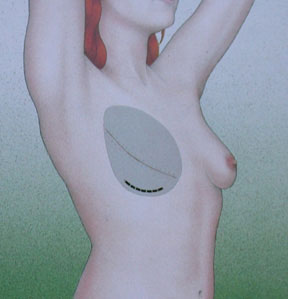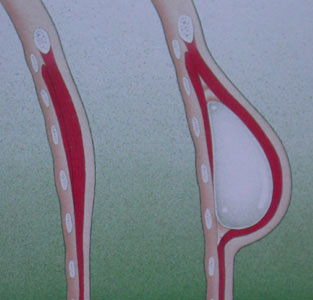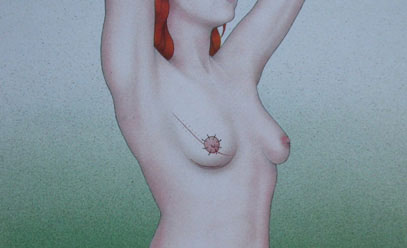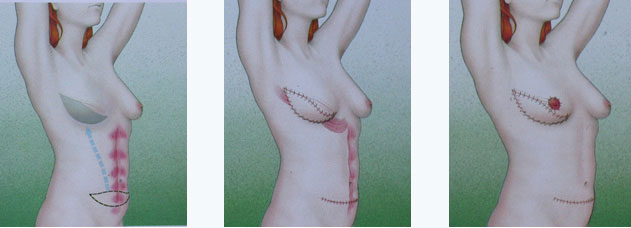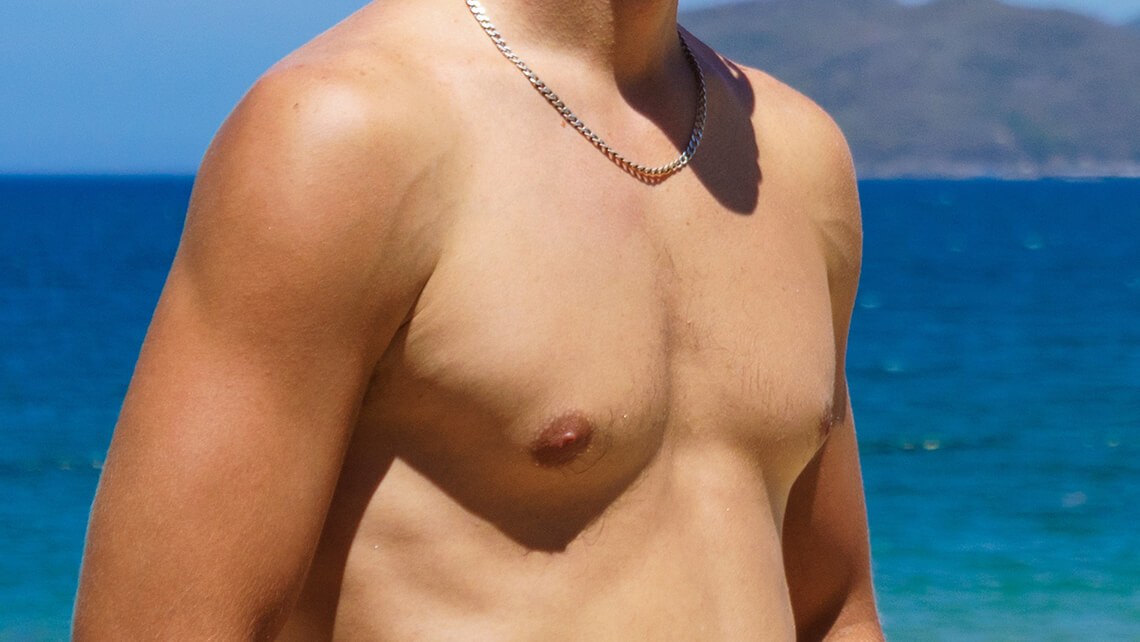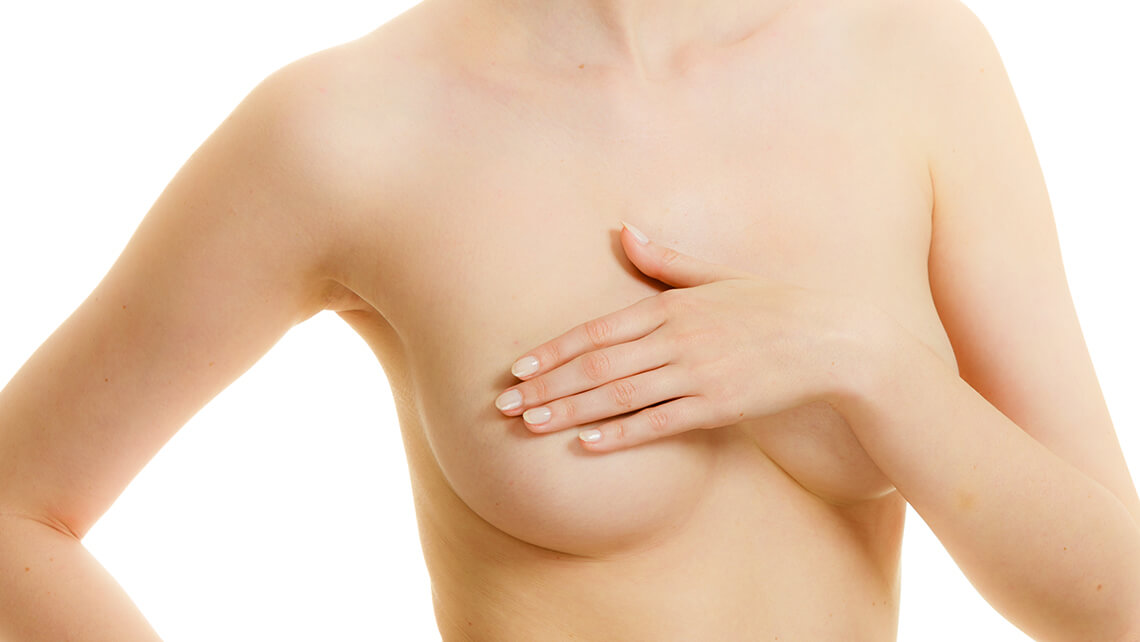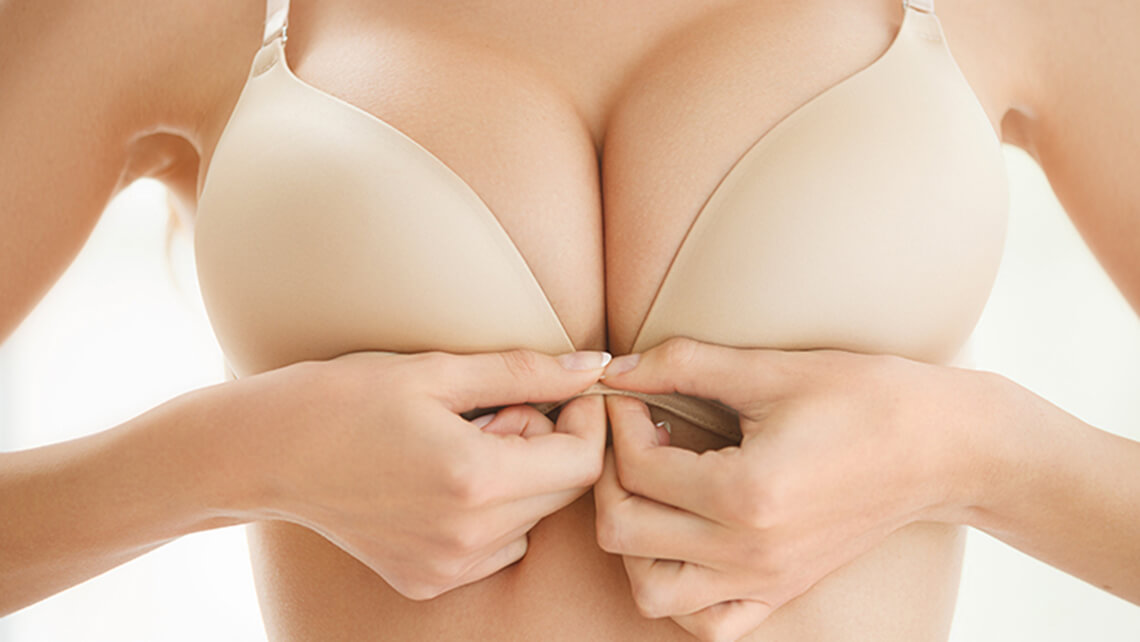Post-Mastectomy Reconstruction (Due to Breast Cancer)
Post-Mastectomy Reconstruction (breast reconstruction procedure performed after mastectomy) is a reconstructive plastic surgery procedure intended to restore the shape and appearance of the breast after complete or partial removal of the breast.
Things to consider before surgery...
For a person who considers having breast reconstruction, the first step is to consult a plastic surgeon. Before having mastectomy, you can get information about a variety of reconstruction possibilities suitable for you, by consulting the plastic surgeon. Your plastic surgeon and general surgeon may work cooperatively before mastectomy that will affect the reconstruction options.

During your visit, you should openly discuss with your plastic surgeon what you expect regarding your appearance and feelings after the reconstructive surgery.
Post-mastectomy reconstruction is intended to enable you to regain your self-confidence by improving your appearance.
Reconstructive breast surgery can be performed in conjunction with mastectomy or a few months later.
The plastic surgeon will explain which reconstruction technique is the most appropriate for you, after evaluating your age, the mass and thickness of your breast skin after mastectomy, tissue changes caused by radiotherapy, and your opinions about the location of the scar (See Surgical Intervention).
After the surgeon explains the surgical technique to be used, he will discuss with you other specific details, including the type of anesthesia, where the surgery will be performed, and what you must realistically expect from the surgery. To obtain a complete surgical result as symmetrically as possible, additional interventions can be performed to reduce or increase the size of the other breast during the reconstructive surgery. If the patient wants a new nipple and dark pink-colored skin around it (areola), the surgeon can also perform this procedure and tattooing at a later date.
Every year thousands of women undergo successful reconstructive breast surgery. However, you should be aware of the potential risks involved in any surgical operation, as well as the specific potential complications that reconstruction involves. Post-mastectomy reconstruction has no effect on the recurrence or non-recurrence of the disease in the breast, nor does it have a positive effect on its treatment. It is possible to treat post-operative complications (such as delayed healing, infection, or localized blood accumulation).
It may be required to review and correct the scars and sometimes perform a second surgical operation to eliminate the condition known as ‘capsular contracture', where the implants are harder than normal due to hypertrophic scar formation. During the consultation, your surgeon will give you inform about these and other possible complications as well as treatment procedures. If you follow your surgeon’s care recommendations during the recovery period, your risk of complications will be minimal.
The costs of reconstructive breast surgery its material costs may vary depending on the duration and details of the operation. The factors that affect the costs also include the type of anesthesia and the hospital where the surgical operation will be performed.
Surgical Intervention....
Reconstructive mammaplasty is the surgical procedure performed to reconstruct the breast after its removal during mastectomy (Figure 1). The procedure to be performed during reconstructive breast surgery depends on what changes are desired and what preferences both you and your surgeon deem appropriate. Your surgery will be performed under general anesthesia in a hospital. There are a variety of approaches in reconstructive breast surgery. The technique to be selected varies depending on the type of mastectomy, the condition of the breast skin and your demands.
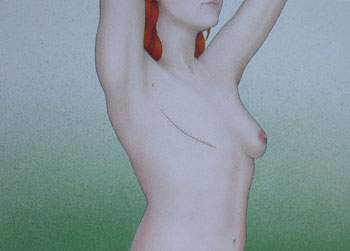
Figure 1: Patient who underwent mastectomy. Appearance of a mastectomy scar
If the remaining breast skin is loose and has adequate thickness, reconstruction can be performed with a surgical implant or prosthesis. To insert the implant, the surgeon makes a small incision in the lower part of the breast where the breast was normally located (Figure 2). The surgeon progresses through the incision and creates a pouch under the skin and muscle. He/she places a breast implant in the pouch. The implant that contains silicone gel or saline solution or a combination of both is covered with a thin layer of flexible plastic.(Figure 3). He/she closes the incision line with a few sutures (Figure 4).
If the breast skin is too tight to allow for placing an implant after mastectomy, a flap (composite tissue piece) that contains skin, muscle and the blood vessels feeding them should be brought to the reconstruction area. The large muscle on the back called the latissimus dorsi, with its overlying skin, can be used for reconstruction. In this surgical procedure, the flap with its blood vessels in it is brought to the area where the breast will be formed, through the tunnel extending from the armpit to the chest, and then the flap is sutured to the skin (Figure 5-6-7). This muscle flap alone can provide the needed breast volume, and also allows for the formation of a pouch for the implant when larger breasts are required. Flap and breast implant create a mound. After sutured, the incision line on the back leaves a scar.
|
|
|
|
|
Figure 3: The implant is placed under the chest muscle. |
|
|
|
| Figure 4: After the placement of the implant, the incision is sutured. The scar remains in the inframammary fold. | |
|
|
|
|
In the other reconstruction technique, a flap containing a part of the abdominal muscle called the rectus abdominis with its overlying skin is used. To create the flap tunneled into the breast area, an incision is made under the abdomen, where the scar can be hidden under the underwear. When the flap is folded on itself, it will provide a mound wide enough to form the breast (Figure 8-9-10). If additional fullness is desired, an implant can additionally be used. The operation leaves a thinned, pleasant-looking abdomen and a small scar.
The surgeon may also use some other reconstructive techniques in some patients. A balloon-like implant known as a skin and tissue expander is placed under the pectoral muscles, and then is gradually inflated over weeks with serum injection. Then, the implant is placed under the stretched skin to obtain a larger breast.
|
|
|
|
The duration of the surgery ranges from two to seven hours, depending on the reconstruction technique and whether surgery is also performed on the other breast. At the end of the surgery, a stabilizer bandage is placed on the breast
If a second surgery for nipple and areola reconstruction is desired, surgeons use local tissue combinations (mostly the upper inner thigh and labia majora) which usually consist of skin grafts and other body parts. Aerola, on the other hand, can be made using a tattoo tool.
Postoperative recovery...
After the surgery, the pain and discomfort felt both in the new chest and in the donor area (if the flap has been brought from the back or abdominal area to the breast area) will go away over time. These are complaints that can be easily controlled with drugs. You will be discharged from the hospital after two to five days depending on the extent of the surgical operation. Sutures are generally removed two weeks after surgery.
The surgeon will do his/her best to make your scars as less noticeable as possible, which are inevitable in mastectomy and breast reconstruction. These scars, which will not disappear completely, heal to a considerable extent in most cases. The reconstructed breast may can be felt tighter and can look more rounded and eye-pleasing than your natural breast. The contours of your breast may be different from what your breast had before your mastectomy, and the new breast may not look exactly like the other breast. Reconstruction cannot restore normal sensation, but some sensations in the breast area will return over time.
You will be able to stand up on the first or second postoperative day, but your plastic surgeon will recommend you to follow a program based on your condition, for returning to normal. To ensure proper recovery, you should avoid intensive activities and heavy lifting for several weeks. The decision on when you can return to work and normal activities depends on your recovery rate and how you feel.
This brochure is for informational purposes on post-mastectomy reconstruction. When you consider plastic surgery, you should not hesitate to ask your surgeon questions about the subjects mentioned in this brochure and any other subjects that you may want to get information about.
Prof.Dr. Serdar Öztürk

